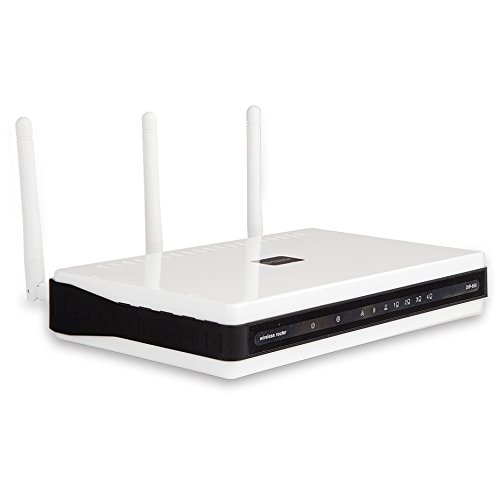In the age of digital transformation, wireless products have become indispensable in both personal and professional environments. From seamless connectivity to reduced dependency on physical cabling, wireless technology has reshaped how we interact with our devices and networks. As we delve deeper into the world of IT hardware, networking, and computer hardware, wireless products stand out as a critical component, enabling faster communication, enhancing mobility, and streamlining business operations. This post explores the evolution, benefits, and future prospects of wireless products in the broader context of technology and networking.
Evolution of Wireless Products in Networking
Wireless technology has evolved rapidly in the last few decades, moving from basic forms of communication like early radio signals to the highly advanced Wi-Fi and cellular networks we rely on today. Initially, Networking was dominated by wired connections, which were cumbersome and limited in terms of scalability. The introduction of wireless products like Wi-Fi routers, wireless access points, and Bluetooth devices revolutionized the way we connect.
As networking infrastructure advanced, businesses and individuals began to adopt wireless products to simplify setups and expand network coverage. These products allowed users to access the internet and local networks without being tethered to a physical connection, thereby providing increased flexibility and mobility. In addition, wireless solutions addressed key IT hardware and computer hardware concerns by reducing the need for complex cabling systems, making network deployment more straightforward and cost-effective.
The Role of Wireless Products in Modern Networking
Wireless products play a pivotal role in both home and business networks. They are essential in connecting devices such as laptops, smartphones, tablets, printers, and other peripherals to the internet and local networks without relying on physical cables. The use of these products extends across several areas, from enhancing productivity in office environments to enabling smart homes.
In business, wireless networking products have transformed the workplace, promoting a more flexible and mobile environment. Employees are no longer confined to desks and are able to collaborate from any location within the network’s range. Furthermore, wireless networks have enabled new technologies such as cloud computing, which rely heavily on robust and secure wireless infrastructures to operate effectively.
For homes, wireless products such as routers, smart home hubs, and wireless printers simplify the process of managing multiple devices, creating a more connected ecosystem. The advancements in wireless technology, including the development of mesh networks, have made it easier to cover larger areas with strong and reliable wireless signals, which is increasingly important as the number of connected devices in homes continues to rise.
Benefits of Wireless Products in IT Hardware and Networking
Wireless products have transformed the field of IT hardware and networking by offering several key benefits, including:
- Flexibility and Mobility: Wireless networks eliminate the need for physical connections, providing users the ability to access networks from virtually anywhere within the signal range. This mobility enhances productivity, especially in corporate environments where employees may need to move between different locations.
- Cost Efficiency: Installing wireless products is generally more cost-effective than setting up wired networks, which require extensive cabling. Wireless solutions reduce the costs associated with maintaining and upgrading physical infrastructures, making it easier for businesses to scale their networks as needed.
- Simplified Installation: With wireless products, setting up a network becomes much simpler and quicker. There is no need for running cables through walls or under floors, reducing installation time and effort.
- Scalability: Wireless networks are highly scalable, allowing businesses to expand their network by simply adding more devices without having to worry about physical limitations. Whether it’s adding more access points to cover a larger area or increasing the number of connected devices, wireless technology provides a scalable solution.
- Enhanced Connectivity: Wireless products allow for continuous connectivity, which is essential for environments that demand constant access to data and resources. This is particularly important in industries such as healthcare, manufacturing, and education, where downtime can have significant consequences.
Key Wireless Products in IT Hardware
The following are some of the key Wireless Products that have made significant contributions to the networking and IT hardware industry:
- Wireless Routers: These devices serve as the backbone of most home and small business networks, connecting all devices to the internet without the need for cables. The latest wireless routers are equipped with advanced features such as dual-band and tri-band capabilities, improving speed and network reliability.
- Wireless Access Points (WAPs): In larger network environments, WAPs extend the range of wireless networks, providing better coverage in areas where the signal from a single router may not reach. These devices are critical for businesses that operate across large areas or multiple floors.
- Wireless Adapters: Many older computer hardware setups still rely on wired connections. Wireless adapters offer an easy upgrade path, allowing these devices to connect to wireless networks without replacing the existing hardware.
- Mesh Network Systems: These systems consist of multiple wireless access points that work together to create a seamless network, eliminating dead zones and improving coverage in large homes or office spaces. Mesh networks have gained popularity for their ease of use and reliability.
- Bluetooth Devices: Although Bluetooth has been around for many years, it remains an essential wireless technology for connecting peripherals such as mice, keyboards, speakers, and more. Recent advancements in Bluetooth technology, including Bluetooth 5.0, have enhanced its range, speed, and efficiency.
Security Considerations for Wireless Products
As the use of wireless products has expanded, so too have concerns about network security. Wireless networks are inherently more vulnerable to attacks due to the open nature of their signals, which can be intercepted by malicious actors if proper security protocols are not in place. To safeguard networks, it is important to implement the following security measures:
- Encryption: Always ensure that wireless networks are encrypted using WPA3, the latest encryption standard. This ensures that data transmitted over the network is secure and cannot be easily intercepted.
- Strong Passwords: Use strong and unique passwords for all wireless devices and networks to prevent unauthorized access.
- Firmware Updates: Regularly update the firmware of wireless products to protect against vulnerabilities and security flaws that may be exploited by hackers.
- Firewalls and VPNs: Consider using additional security tools like firewalls and VPNs to enhance the security of wireless networks, especially for businesses handling sensitive information.
The Future of Wireless Products
The future of wireless products looks promising, with several trends driving innovation in this space. The rollout of 5G technology is set to revolutionize wireless networking by offering faster speeds, lower latency, and higher capacity. This will open new possibilities for applications such as the Internet of Things (IoT), smart cities, autonomous vehicles, and more.
In addition, advancements in Wi-Fi technology, such as Wi-Fi 6 and Wi-Fi 7, are expected to further enhance the performance and reliability of wireless networks. These technologies will address the growing demand for bandwidth and connectivity as more devices come online.
Conclusion
Wireless products have fundamentally changed the landscape of networking and IT hardware. As Technology continues to advance, the reliance on wireless solutions will only increase, offering even more benefits in terms of flexibility, scalability, and efficiency. With security remaining a top concern, it is essential to stay informed about the latest developments and best practices in wireless technology. From homes to businesses, wireless products have become a critical component of modern networking, enabling us to stay connected in an increasingly digital world.









